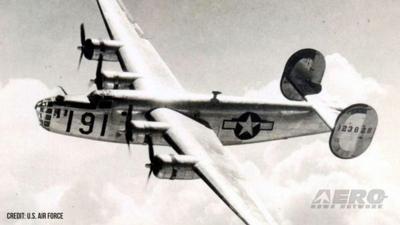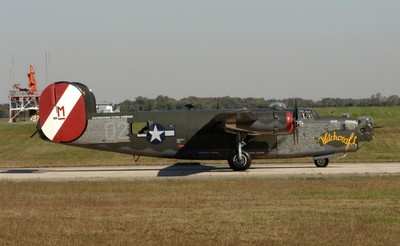B-24 Pilot Lt. William Montgomery Bound for Arlington
The remains of a U.S. airman who lost his life in the Second World War World have been discovered and formally identified 79 years after his death.

Lieutenant William Montgomery’s B-24 Liberator was shot down by anti-aircraft flak on 22 June 1944 while carrying out an attack on a German airfield in northern France. The stricken B-24 managed to limp across the English Channel before losing altitude off the Sussex coast and ultimately crashing on an English farm near Arundel, West Sussex.
Seven of the bomber’s ten-man crew bailed successfully out of the aircraft. Lieutenant Montgomery, the ship’s Pilot in Command; John Crowther, the aircraft’s Second in Command; and ship’s engineer Sergeant John Holoka remained aboard in an heroic but futile attempt to recover the B-24.
At the time of his passing, Lieutenant Montgomery was 24 years old.
Lieutenant Montgomery and Sergeant Holoka were assigned to the U.S. Army Air Corps’ (USAAC) 844th Squadron stationed at RAF Halesworth, Suffolk. The 844th participated in strategic bombing missions of Normandy prior to, during, and after D-Day.
Crew member Lieutenant Demoyne Henderson, who was also aboard the ill-fated B-24 but survived its harrowing final ordeal, later wrote: "Just a few seconds after bombs were away we were hit hard by flak. We managed to stay in the vicinity of the formation until the French coast was reached." Lieutenant Henderson continued: "I went to the flight deck and only one rudder and one elevator was in working order. We were in the rear of the ship until almost at the English coast when the order came to bail out. … Just after my chute opened, I heard the whine of the plane going down.”
Lieutenant Henderson set forth that the first four of the B-24’s crew-members who bailed out "landed about four-miles out in the Channel and were rescued quickly."
Henderson noted the aircraft’s navigator landed on the beach while the other two crew members landed approximately one-mile inland.
"We were not allowed to visit the plane, but it was a total loss," Henderson remarked.
Sergeant Crowther’s body was recovered at the time. Excepting an identity bracelet belonging to Lieutenant Montgomery, nothing more was found of the men who’d remained aboard the doomed B-24.
In the 1970s, a quarter-century after WWII’s conclusion, amateur historian Andy Saunders looked into the crash of Lieutenant Montgomery’s B-24 and calculated the aircraft’s wreckage had most likely come to ground on the property of the aforementioned English farm.
While attending a 2012 conference, Saunders mentioned his theory and Lieutenant Montgomery’s recovered bracelet to an officer of the U.S. Department of Defense’s POW/MIA Accounting Agency (DPAA).
U.S. officials subsequently undertook a formal investigation of the crash. Working in concert with British historians, two excavations were carried out; the first in 2019 and the second in 2021. Subject excavations turned up B-24 wreckage and human remains. DNA testing conducted in the U.S. confirmed the remains were, in part, those of Lieutenant Montgomery.

Mr. Saunders, who characterized his role in bringing the lost war hero home to his family as “a privilege,” stated: "His [Montgomery’s] great-niece, Tracey Kirchhoff, has emailed me to say the family are absolutely delighted and very happy that he has been found."
British historian and archeological team-member Mark Khan asserted: "Lieutenant Montgomery is no longer missing."
Lieutenant William Montgomery will be laid to rest with full military honors at Virginia’s Arlington National Cemetery in the coming days.
At the West Sussex crash site, a newly-erected memorial stone reads: "On the 22nd June 1944, a USAF B-24H Liberator crashed in front of this plaque. Three lives were lost. For our lost heroes, long-gone but not forgotten. Your sacrifice ensured the freedom of the world."
 ANN's Daily Aero-Term (04.30.24): Runway Centerline Lighting
ANN's Daily Aero-Term (04.30.24): Runway Centerline Lighting ANN's Daily Aero-Linx (04.30.24)
ANN's Daily Aero-Linx (04.30.24) Airborne 04.24.24: INTEGRAL E, Elixir USA, M700 RVSM
Airborne 04.24.24: INTEGRAL E, Elixir USA, M700 RVSM Airborne 04.29.24: EAA B-25 Rides, Textron 2024, G700 Deliveries
Airborne 04.29.24: EAA B-25 Rides, Textron 2024, G700 Deliveries Airborne-NextGen 04.23.24: UAVOS UVH 170, magni650 Engine, World eVTOL Directory
Airborne-NextGen 04.23.24: UAVOS UVH 170, magni650 Engine, World eVTOL Directory




